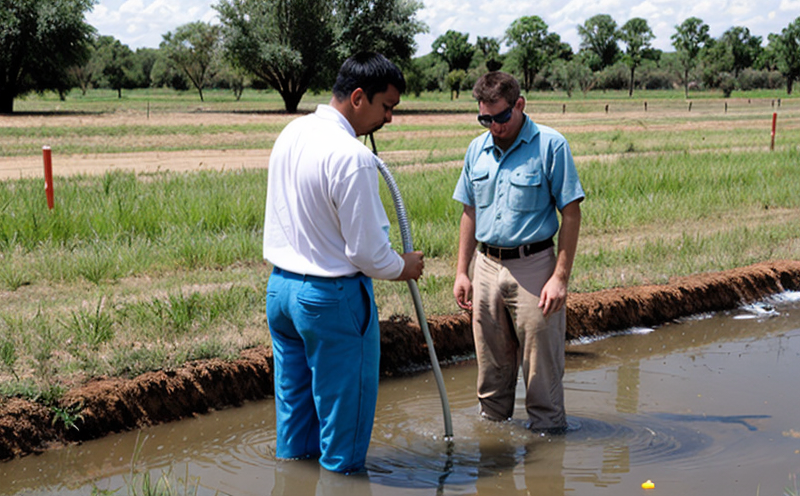ASTM D3559 Lead Determination Test in Groundwater
The ASTM D3559 standard provides a method for determining the concentration of lead in groundwater, which is critical for ensuring compliance with environmental regulations and protecting public health. This test is particularly important in areas where industrial activities or urbanization may have led to contamination by heavy metals such as lead.
Lead can enter groundwater through various pathways including leaching from old pipes, landfills, or industrial waste sites. Once present, it poses a risk to human health when consumed or used for irrigation purposes. Groundwater is often the primary source of drinking water in many regions, making its quality monitoring crucial.
The ASTM D3559 method involves several steps designed to ensure accurate and reproducible results. These include proper sampling procedures, sample preservation techniques, and analytical methods that are sensitive enough to detect even low levels of lead.
Proper interpretation of the test results is essential for making informed decisions regarding water treatment processes or remediation efforts if contamination is detected. Regulatory bodies often require compliance with specific limits set forth by international standards like ISO 17025 and EPA guidelines, emphasizing the importance of accurate testing methods such as ASTM D3559.
Our laboratory offers comprehensive services tailored specifically to meet the needs of environmental scientists, engineers, and policymakers involved in monitoring and managing groundwater resources. By leveraging advanced analytical equipment and experienced technicians, we ensure reliable data generation that can be used confidently for regulatory submissions or internal decision-making processes.
Applied Standards
| Standard | Description |
|---|---|
| ASTM D3559 | This standard specifies the procedure for determining lead in water by atomic absorption spectrometry after preconcentration. |
| ISO 17025 | International Organization for Standardization accreditation requirement ensuring laboratory competence and quality of services provided. |
| EPA Method 200.8 | The United States Environmental Protection Agency's official method for lead analysis in drinking water sources including groundwater. |
Scope and Methodology
The ASTM D3559 lead determination test employs atomic absorption spectrometry (AAS) as its primary analytical technique. Before analysis, samples undergo filtration to remove particulate matter which could interfere with the measurement process.
- Sample Collection: Groundwater samples are collected using appropriate sampling equipment to minimize contamination risks.
- Sample Preservation: Samples may be acidified immediately upon collection to prevent further degradation of the sample.
The filtered and preserved samples are then subjected to preconcentration step where concentrated solutions enhance detection sensitivity. Following this, they are analyzed using an AAS instrument capable of detecting lead down to parts per billion (ppb) levels.
Acceptance criteria specify that results must fall within specified limits defined by relevant regulatory agencies like the EPA or WHO guidelines. Compliance with these stringent standards ensures public safety and environmental protection.
Competitive Advantage and Market Impact
- Accurate Results: Our laboratory consistently delivers precise results that adhere strictly to ASTM D3559 specifications, giving our clients peace of mind regarding their compliance status.
- Expertise: With years of experience in environmental testing, we employ highly skilled personnel who stay updated with the latest advancements in analytical techniques.
- Regulatory Compliance: By adhering to international standards like ISO 17025 and EPA methods, we ensure that our clients meet all necessary regulatory requirements.
- Sustainability Focus: Our commitment to sustainable practices extends beyond just the tests conducted; it also encompasses reducing our own carbon footprint through energy-efficient operations and waste management strategies.





